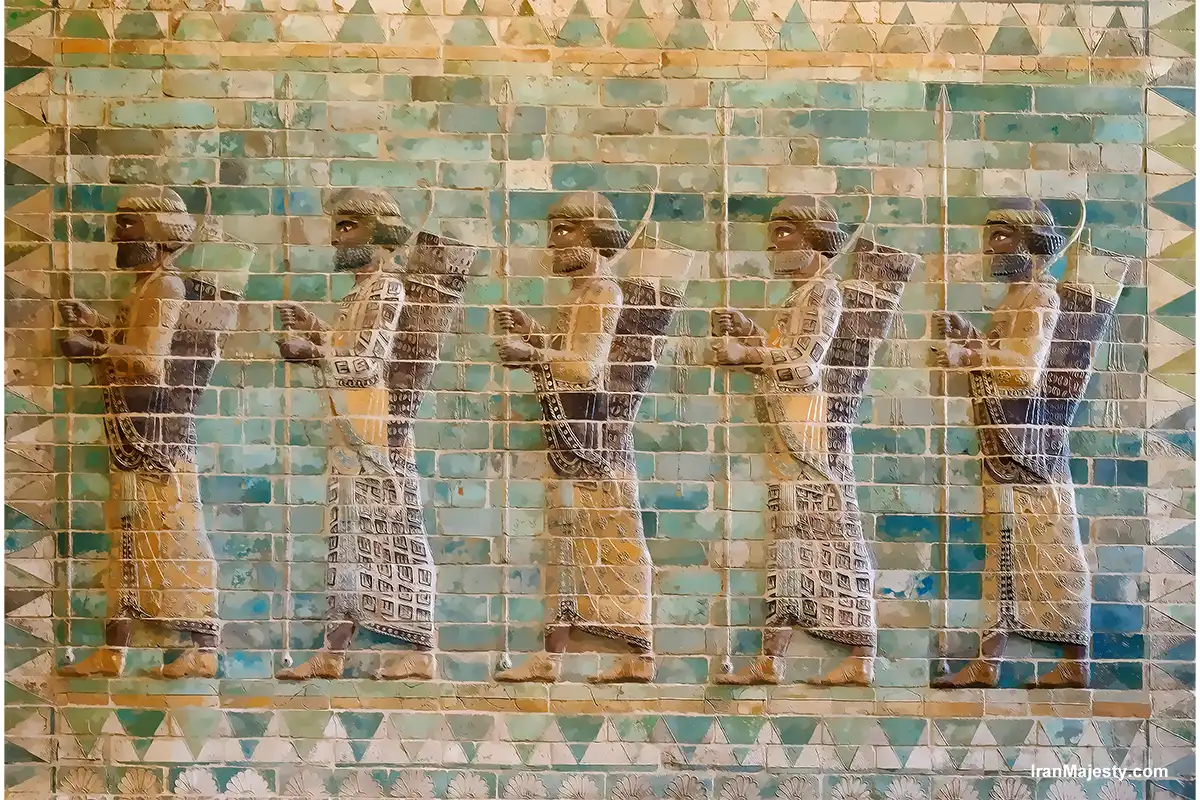You might be curious about the origins of Iranians, wondering, “Who are the Persians descended from?”, “What is the ancestry of the Persian people?”, or “Who are the descendants of ancient Persia?” or “ from whom are the Persians descended?”
The origins of the Persian people stretch back thousands of years and are deeply rooted in the complex migrations and interactions of ancient civilizations. Persians are believed to descend from the Indo-Iranian or Aryan groups, who themselves were part of the larger Indo-European family of ethnic groups. Here is an in-depth look at this ancestry:
Indo-European Origins
The Persian people are traditionally linked to the Indo-European tribes, who are thought to have originated from the steppes north of the Black Sea in modern-day southern Russia and Ukraine around 4000–3000 BCE. These groups eventually split and spread out across Europe and Asia, giving rise to various branches, including the Indo-Iranians. Around 2000 BCE, the Indo-Iranians began migrating southward toward what is now Iran and India.
This migration brought the Indo-Iranian tribes, who shared similar languages and cultural practices, into the Iranian plateau. Among these tribes, the Medes and Persians eventually became dominant groups in what is now Iran. These early tribes laid the foundation for what would become the Persian civilization, bringing with them a common language and spiritual beliefs.
The Role of the Medes
Before the rise of the Persians, the Medes were a powerful civilization in ancient Iran. The Medes, who also descended from the Indo-Iranian people, established a kingdom in western Iran that was influential in uniting the local tribes. The Medes and Persians shared cultural and linguistic similarities, which made it easy for the Medes to integrate the Persians into their kingdom.
In the 6th century BCE, the Medes were eventually overtaken by the Persian leader Cyrus the Great, marking the beginning of the Achaemenid Empire. The merging of the Medes with the Persians helped establish a unified Persian identity and allowed the Persians to build a vast empire.
The Achaemenid Persians and Zoroastrianism
The rise of the Achaemenid Empire (550–330 BCE) is where the Persian identity truly began to flourish. Founded by Cyrus the Great, this empire brought together various ethnic groups under Persian rule and promoted a shared Persian culture. Zoroastrianism, the religion founded by the prophet Zoroaster (or Zarathustra), became a central part of Persian identity and deeply influenced their values, governance, and cultural practices.
Zoroastrianism emphasized truth, justice, and the balance between good and evil. The teachings of Zoroaster resonated with the Persian people and became the state religion, cementing cultural unity. Through Zoroastrianism, the Persians cultivated values that would later influence global civilizations, such as the importance of moral responsibility and respect for nature.
The Parthians and Sasanians: Preserving Persian Identity
Following the fall of the Achaemenid Empire to Alexander the Great, Persia entered a Hellenistic period but retained its Persian identity through the Parthian and Sasanian empires. These empires maintained Persian traditions and upheld Zoroastrianism as a key cultural and religious influence. The Sasanian Empire (224–651 CE) is particularly noted for reviving Achaemenid ideals and expanding Persian culture, art, and architecture. The Sasanians also resisted Roman expansion, preserving the independence and unique cultural identity of the Persian people.
Persian Influence on Neighboring Civilizations
Through these empires, Persian civilization influenced cultures far beyond its borders. The Persian language spread throughout Central Asia and the Indian subcontinent, becoming a prominent cultural and administrative language during the medieval period. Persian art, philosophy, governance, and religion impacted the Greek, Roman, and later Islamic civilizations, creating a legacy that extends to this day.
Modern Descendants of Ancient Persians
Today’s Persian people, predominantly known as Iranians, are largely descendants of the ancient Indo-Iranians, including the Medes, Achaemenids, Parthians, and Sasanians. Their culture has evolved through centuries of historical events, conquests, and interactions with various cultures. The Persian language, now called Farsi, remains a core aspect of their identity, as do many traditions that originated with their ancient ancestors.
Exploring Persian Heritage
Traveling to Iran allows visitors to witness the impressive remnants of this rich heritage. Sites like Persepolis, the ancient ceremonial capital of the Achaemenid Empire, and the tomb of Cyrus the Great offer a glimpse into the lives of the ancient Persians. These locations, along with Zoroastrian temples and Sasanian monuments, showcase the depth and influence of Persian culture across time.
Visiting Iran is like stepping into a living history book, where the past and present merge to create a unique cultural experience.
Join the Conversation!
Have questions or thoughts about Persian heritage? Leave a comment below, and feel free to share this article with others interested in ancient history!


0 Comments